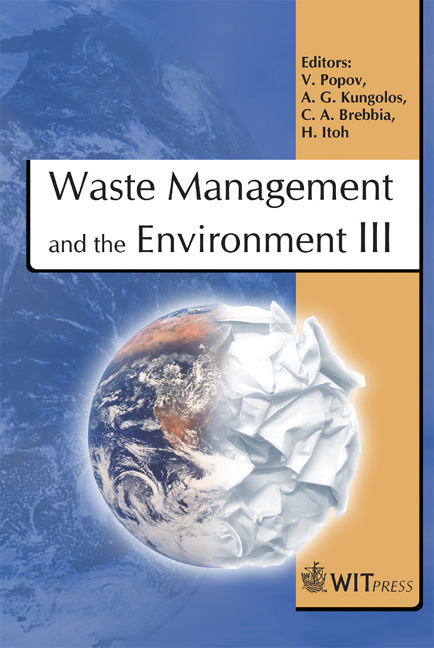Chemical Hazard Exposure As A Result Of Waste Land Filling: A Review
Price
Free (open access)
Transaction
Volume
92
Pages
8
Published
2006
Size
323 kb
Paper DOI
10.2495/WM060391
Copyright
WIT Press
Author(s)
M. E. El Megrahi, G. Karani & K. Morris
Abstract
Waste is any substance that is discarded, emitted or deposited in the environment in such volume, constituencies or manner as to cause damage in the environment. Waste can include domestic waste, commercial waste, industrial, medical and radioactive material. All types of wastes are deposited in the environmental ecosystem frequently by the land filling process. Land filling is one of the methods used to reduce and manage the waste as well as being the most common method by which waste is disposed of in the UK. After dumping the waste in landfill sites, several chemical hazard materials such as volatile organic compounds, (VOCs), methane, heavy metals, dioxin, furan, hydrogen sulphide and natural occurrence radioactive material (NORM) are vented to environment as result of several biological and chemical processes occurring in the landfill site. This paper is a review of the current knowledge on the importance of monitoring of chemical hazards and its effects on environment and health. Keywords: land filling, sources, monitoring, chemical hazard, exposure. 1 Introduction The quantity of waste generated has considerably increased for several reasons, but major factor is lifestyle improvement and the increase in consumption of food and goods associated with it. However, another factor associated with increased waste production is the extension in industries throughout the world. While this expansion in industrial capacity offers more diversity in production, the increased waste production brings with it considerable associated problems. In addition, waste disposal is subject to legislation governing treatment before
Keywords
land filling, sources, monitoring, chemical hazard, exposure.





